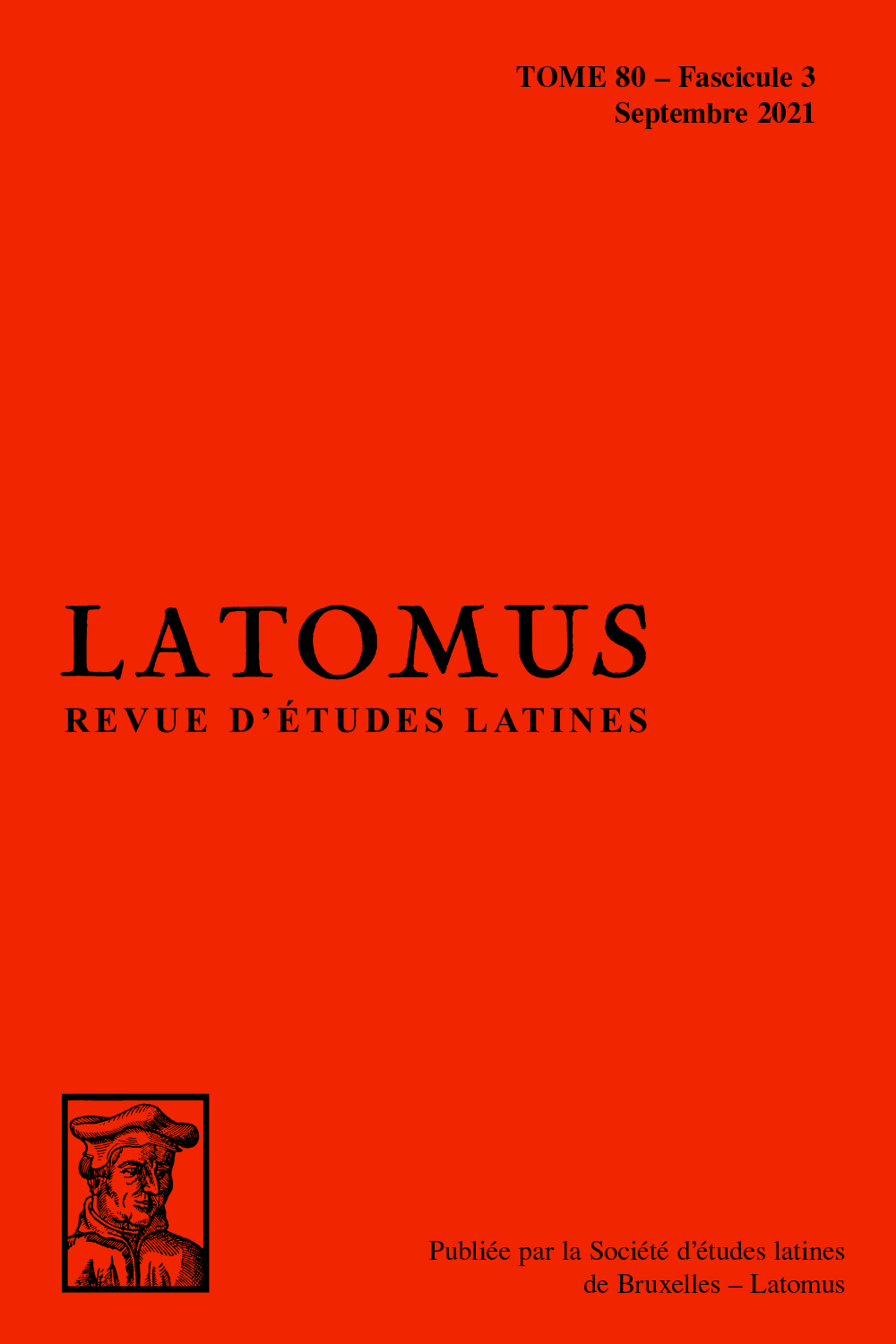 previous article in this issue previous article in this issue | next article in this issue  |

Preview first page |
Document Details : Title: Placing Medea Subtitle: A Topographical Approach to Seneca's Tragedy Author(s): WALSH, Lisl Journal: Latomus Volume: 78 Issue: 3 Date: 2019 Pages: 771-801 DOI: 10.2143/LAT.78.3.3287370 Abstract : This essay proposes a spatial analysis of Seneca’s Medea in the Theatre of Pompey, showing how a place-based approach to a (hypothetical) performance of this tragedy alters the interpretation of the text. The essay discusses how this approach fits within the current ‘spatial turn’ in Classics and uses additional scholarship from human geography, phenomenology, and new materialism to specify how place-based analysis differs from previous scholarship on ancient Roman drama. The essay then mobilizes the topographical references that might 'pop' in the simultaneous experience of the text and the place: structurally, the nearby saepta Iulia and porticus Argonautorum, the adjacent curia of Pompey, the Temple to Venus uictrix in Pompey’s theatre, and its 'sister' temple to Venus genetrix in Julius Caesar’s forum. Literarily, approaching this text in this location reveals previously-unnoticed references to Ovid’s Ars Amatoria 3 and Fasti 3. From the physical structures that gain relevance, the literary intertexts, and the peculiarities of Seneca’s version of the play, I ultimately argue that, in the Theatre of Pompey, Seneca’s story of Medea and the Argonautic voyage can easily be read as a representation of the assassination of Julius Caesar and a critique of the end of the Roman republic. |
|


